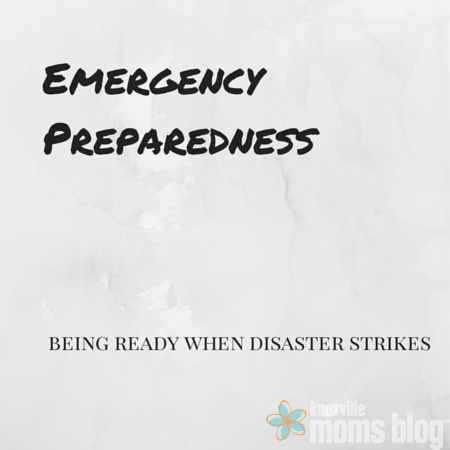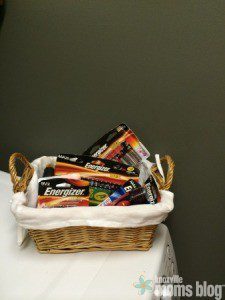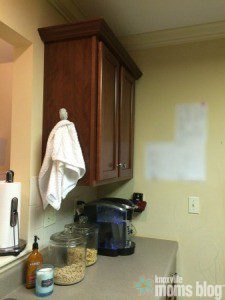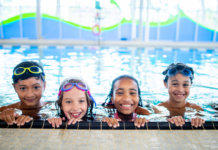I like planning, organizing, and being prepared. One of the many ways in which I strive to do that for my family is by being prepared for emergencies. I haven’t always been like this though. After my husband and I got married, we moved to Washington DC. It was my first time living anywhere besides Knoxville, and we happened to be there for some pretty wild weather. After 3 blizzards, a (mini) earthquake, and a hurricane heading our way, I really had to get my act together and be prepared for a true emergency. There was nothing like the power going out when there were 2 feet of snow on the ground and continuing to fall, while my husband was out of town to give me just the kick in the rear that I needed to get prepared.
Flashlights, blankets, heating supplies, water, and food sources are all important to have on hand because you never know when a disaster is going to strike.
Here is my emergency preparedness list for what I keep on hand and where I store it JUST IN CASE we should ever need it.
When thinking of how much supply you will need, it’s recommended to have enough for at least 3 days.
1. Flashlights, batteries, and bottled water for drinking.
All stored in the laundry room within easy reach in case we need them! Because these are things we use frequently anyway, it helps to make sure we keep a fully-stocked, rotating supply of supplies.
2. Nonperishable food {dried fruit, canned tuna fish or chicken, canned foods}, can opener, supplies for food.
Together in a small, clear container within the large emergency supplies tub.
3. First Aid Kit.
We keep a kit with our medical supplies, one in our car, and one in the tub with emergency supplies.
4. Plastic trash bags, hand sanitizer and antibacterial hand wipes, travel-sized personal hygiene items, infant formula, diapers, 7-day supply of medications (remember to rotate these every 6 months!), lighter, pet supplies (if needed), whistle, battery powered radio, multipurpose tool {Swiss army knife}, gallon-sized bottled water for hygiene and/or drinking, and sleeping bag and warm blankets.
In the large emergency supplies tub.
5. Clothing and shoes for everyone.
We don’t have enough extra clothes that we can pack them away for a “maybe” use, so I worked up a plan. We have ziploc bags with a change of clothes for our son in his backpack, so if the emergency is one where I have time to gather things up, then I can grab his backpack with the clothes. If it’s not that type, then I probably don’t care what clothes we are wearing any way.
6. Fire extinguisher.
We have one located on each floor of our house. Everyone in our family knows where they are located and how to use them.
7. Important family documents.
We keep ours in one location in a fire-proof, water-proof lockbox in our home. It’s a heavy box, but is not too heavy to be carried with us if need be. Knowing the documents are in a safe place, also brings relief in case we had to get out of the house right away.
8. Fun! {Books, puzzles, games, coloring books, crayons. Anything fun to keep kids busy if you’re going to be stuck together with no power for awhile.}
We have a general location in our house where these things are kept. I also have a few Target 1 spot items that I have thrown in the emergency tub.
9. List of phone numbers.
Have landline phone numbers on hand! When the (mini) earthquake happened while we were in DC, we couldn’t get through to each other on our cell phones for awhile. Thankfully, we were completely fine, but it is certainly unsettling to not be able to reach your loved ones. Keep a list of landline numbers handy, so you have another way to try to get in touch with people should cell phone service go down.
10. Be prepared for the sitter.
I really love our babysitters and totally trust them, so I haven’t always left them with the best information. All it took was CPR class to get me to give them some information. I now have emergency phone numbers posted for our sitters. Hopefully they will never, ever need them. But I would rather them have those numbers than not just because I was laid back about it.
There are many great resources on emergency preparedness, and you can read more details about each scenario. Print out this emergency preparedness checklist to get yourself prepared and this one so your kids can help out, too! Read more from the CDC and the American Red Cross.
How have you prepared yourself and your home should an emergency strike? Share with us in the comments!






















